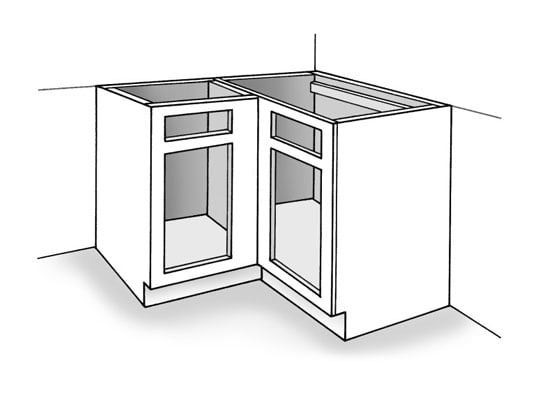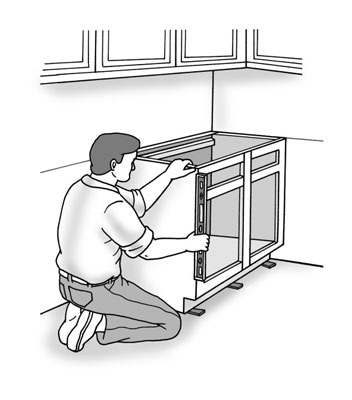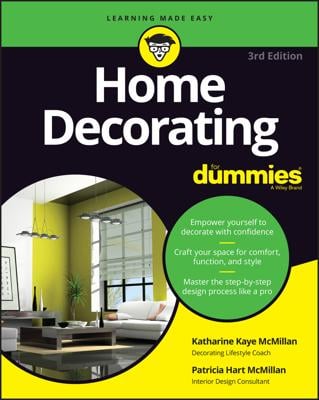In the first option, a blind base installation, the cabinet on one wall (the blind base) extends almost to the corner, and then a standard base cabinet installed on the adjacent wall butts into it. Install these cabinets as a team and clamp them together as you level, plumb and attach them to the wall.
A corner base, often equipped with revolving "Lazy Susan" trays, is a single cabinet that extends 36-inches along adjacent walls. You must align it to reference lines on both walls as you level, plumb, and attach it to the wall.
In the third option, two standard base cabinets meet at their front corners creating a 2x2-foot dead (inaccessible) space in the corner
The steps that follow describe an installation that starts with a blind base:
Position the blind base cabinet and then the standard base cabinet on the adjacent wall that butts into it.

If you are using two standard base cabinets, you must install the cabinets in pairs to ensure that they meet precisely.
Working on both cabinets, insert shims under the exposed ends and front edges until each cabinet is flush with the horizontal line and 1/4-inch away from the plumb reference line on its wall.
Use a level across the top, from front to back and on the face of the cabinet, while inserting tapered shims. Shim under exposed edges to raise the back to the line; shim under the front to level the front from side to side and back to front.
Clamp the top edges of the cabinets together.
Because the face frame overhangs the base cabinet by 1/4-inch, insert a 1/4-inch shim between the cabinets near the back edge to maintain that 1/4-inch space.
Attach the cabinets to the wall with 3-inch screws through the mounting rail at each wall stud location.
Drill clearance holes in the rails first and don’t drive the screw tight just yet. Chances are you’ll still need to spend time shimming the cabinets until they are just right.
Check the cabinets again to make sure that they are plumb and level in all directions, and that they still align properly with the two reference lines and with each other.

Back out an installation screw to insert a permanent shim behind the cabinet at each stud location as needed. Reinstall the screw to secure the cabinet and keep the shim in place. Spend lots of time getting this corner perfect. Proper installation of the remaining cabinets all depend on it.

